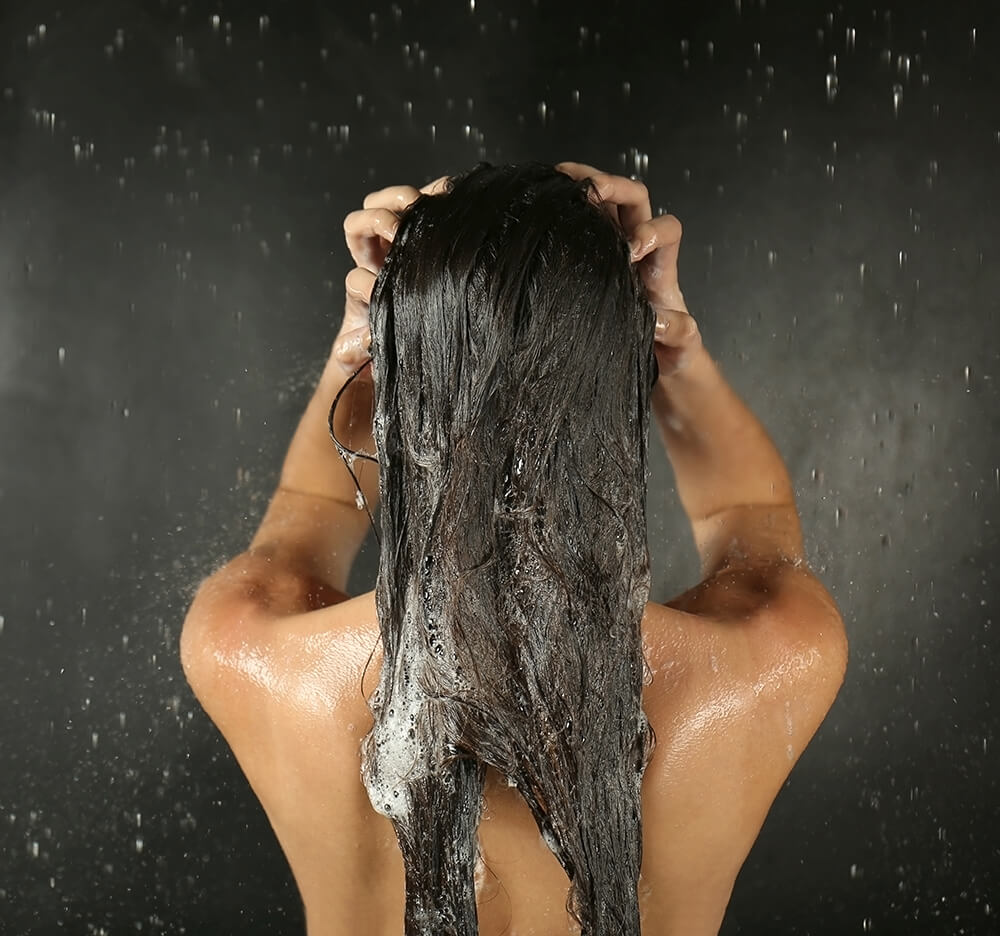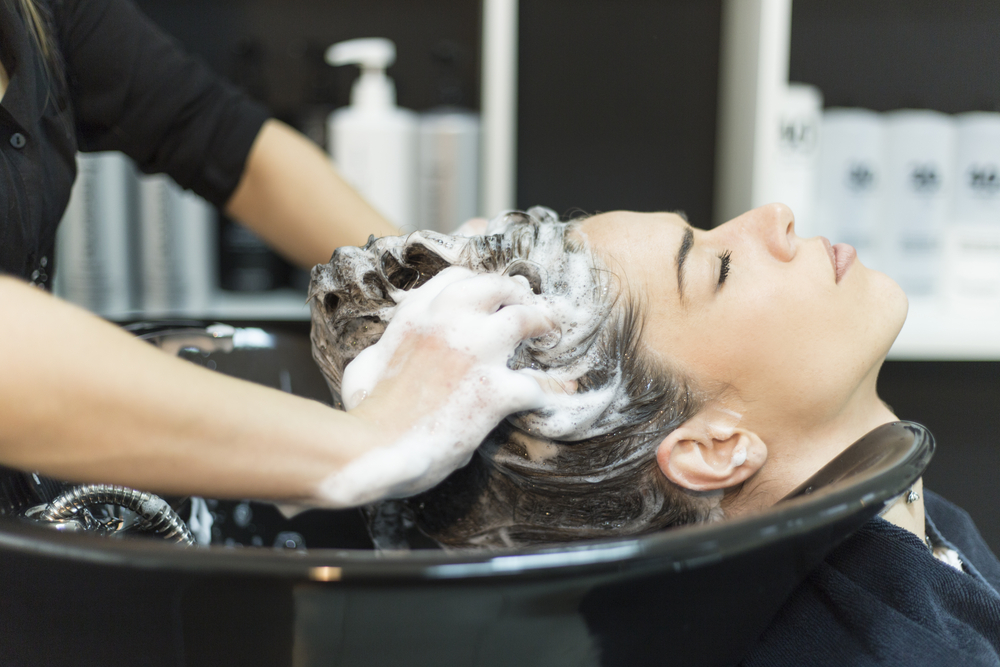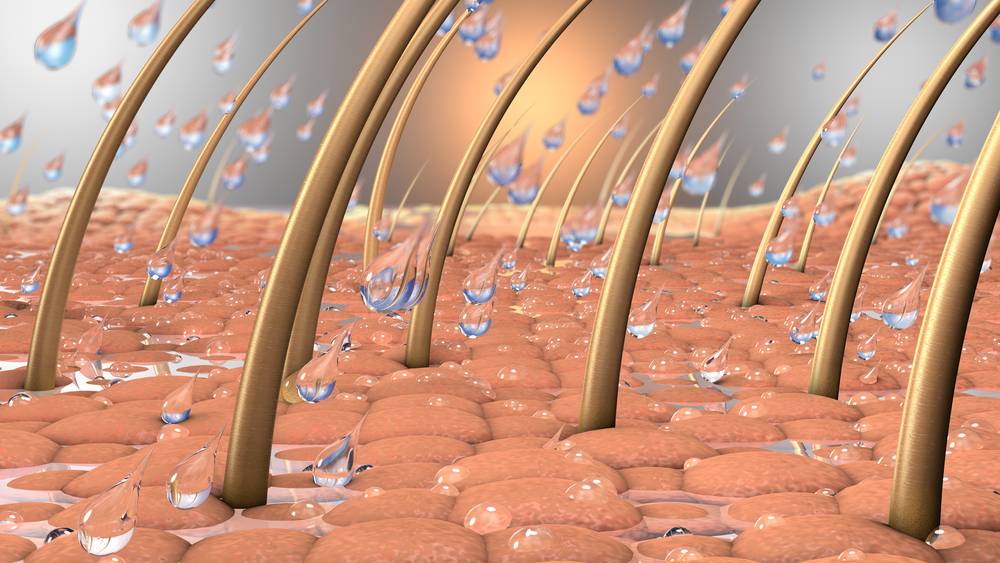
Hair Washing
We should change the phrase “How often do shampoo your hair?” to “How often do you wash your scalp?”
Leading experts will often discuss the much-debated topic on the frequency of hair washing. The answer is not straightforward for some individuals, and a thorough evaluation of the current state of your hairs health will significantly contribute to the answer. Everyone has an individualized combination of genetics, hair exposures, and nutritional habits that all play a role in the current status of your hairs health. Discovering the strengths, and weaknesses of your equation are the first steps towards the recovery of your healthy locks. Review the following factors that are critical to achieving healthier hair:
- Total time of hair health decline
- Scalp Health
- Overall health status
- Oil production
- Daily exposures and activities
- Type of shampoo/conditioning systems used
- Length of hair
- Level of coloring
- Styling damage
- Texture of hair
We all lose up to 100 hairs a day, and some of those hairs fall out during the shampoo. Washing your hair does allow loosened follicles to become dislodged that would have usually fallen out within the next day or two during brushing. Washing your hair more often does not lead to increased fall out. The concern becomes does washing your scalp causes your shaft (the dead portion of your hair) to dry out? Proper methods of shampooing, conditioning, and styling can prevent drying of hair, and in fact, promote stronger healthier locks.
Washing your scalp with proper shampoo’s will help to lock moisture, restore your vitality, body, shine, and volume to your hair when combined with proper nutrition, and styling methods.

Does washing your hair dry your hair out?
Washing your scalp is crucial in maintaining healthy hair for individuals susceptible to androgenic hair loss, or other medical conditions that affect the hair growth cycle. Not everyone needs to wash their scalp daily. However, hair that is thinning should consider a minimum of washing every 24 hours, and everyone should consider washing his or her hair within 48 hours for non-black hair, and 1-2 per week for black hair. Imagine if we did not wash our face daily, well your hair has the same build up as your face.
The common concern focuses on the possibility of frequent shampooing will cause drying out the hair’s natural oils (sebum). The natural oils in your hair sit on top of your hair shaft but don’t penetrate the hair cuticle. Water, however, does penetrate the shaft. Therefore, those with less than optimal hair growth and thickness-strength should consider proper daily shampooing of the scalp with low acidic hair products.
Shampoo “cleaning” focuses on the scalp, while conditioning focuses on the dead portion of the hair follicle, then healthy follicles will be allowed to reach their fullest potential with topical products. Important to know that styling your hair can be the most significant damaging action to the dead portion of the hair follicle. Improving styling methods that reduce heat onto the follicle are an essential part of ensuring the health of your hair.
What temperature should you wash your hair?
Hot temperature is best to help open the hair cuticle for shampooing, and cold water helps to close the cuticle during the rinse of the conditioner.

Shampoo/Conditioners
What is the best type of shampoo?
Finding a shampoo’s that have a crucial ingredient of glycolic acid is essential in your ability to cleanse your scalp sufficiently. Glycolic acid is extracted from sugar cane, and is a common facial cleansing exfoliator, and loosens and removes away oil (sebum), dead skin, and dirt from your scalp. Further, helps to restore the pH balance of your hair, and lock in the moisture to the follicle.
The sweet spot for the pH balance of shampoo is around 4 to 4.5. When a shampoo is neutral at 7 or above, then stripping can occur of your natural oils. These natural oils are your natural defense against environmental factors that cause damage and frizz. Without the right pH balance of your shampoo, “a vicious cycle can be triggered to produce higher levels of sebum production,” and results in more clogged follicles. Low pH shampoos help smooth out the cuticle and protect each strand from external factors that cause frizz to develop.
FAQs
How do you apply shampoo?
First, rinse your hair with warm water, not too hot. Then apply the shampoo directly to the scalp. Lightly to moderately massage your scalp for 1 minute.
What’s best soft or hard water?
Soft water is best for shampooing. Hard water may contain minerals, that do not permit the shampoo to lather. Further, hard water is not good for colored hair. Hard water tends to be in locations where wells are more common. Leading experts recommending using filtered water to wash your hair.
How do you apply conditioner?
Before shampooing your hair, apply from the mid-shaft down a light layer of conditioner. This will help prevent dry out of your hair shaft. Especially, when you’re using a proper 4.5 acidic shampoo.
After the shampoo, lower the water temperature, separate your locks into halves, like two pink tails, and apply conditioner from the tips towards the upper middle shaft. Allow the conditioner to stay for 3-5 minutes. Now rinse with cooler water.

Natural DHT Reduction with a Scalp Peel
There are a significant number of natural remedies that are widely known to attempt to remove DHT from the scalp, aka the hair killer. These remedies aren’t scientifically proven, but many hair experts swear by this one.
Ingredients:
- Himalayan or Celtic sea salt (½ tbsp)
- Powdered activated charcoal (1 tsp)
- Ginger
- Cucumber
- Lemon juice (1 whole)
- A juicing machine (or a blender and muslin cloth)
Mixing Directions:
In a Vitamix or equivalent juice ginger and cucumber, you will need 100 mL of the combined liquid. Then juice a whole lemon into the mix. Lastly add salt, powdered activated charcoal, and shake well together before applying.
Application Directions:
Simply apply directly onto your scalp. Focus on the thinning areas, massage into scalp and sit for 5-10 minutes before removal. Rinse with lukewarm water. To use, apply the mixture directly to your scalp.
Note: lemon and ginger work together to break down the scalps plaque, and the salt acts as a gentle, exfoliant, while the activated charcoal will absorb excess sebum (and DHT), and the cucumber provides a soothing and alkalizing agent.
